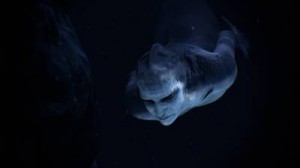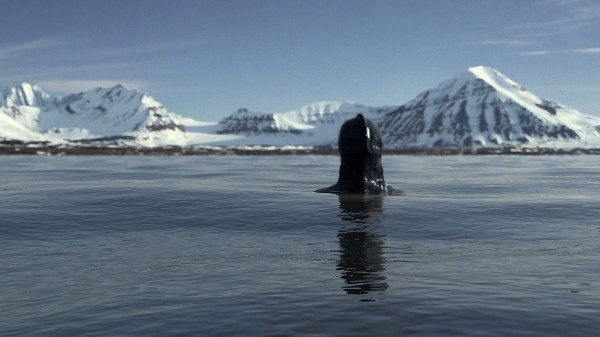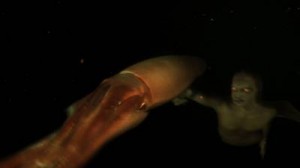‘MERMAIDS’ REVEALED: Everything you wanted to know about the TV special of the year

When the hit TV movie Mermaids: The Body Found premiered on Animal Planet in late May, the reaction was palpable. Audiences were left wondering what was real and what was faked. Was this Jacques Cousteau or The Blair Witch Project?
Now, the channel is set to air a special repeat of the controversial “documentary” on Thanksgiving night at 9 and 11 p.m. For mermaid alumni, it will be a chance to inch closer to the television screen and see the “evidence” up close. For newcomers, it will be a chance to get in on the conversation.
Recently, Hollywood Soapbox exchanged emails with Charlie Foley, executive producer of Mermaids: The Body Found.
Have you been surprised about the overwhelming reaction to Mermaids (good, bad, indifferent)?
Seven years ago I’d written and oversaw a film imagining the history of another mythic creature, called DRAGONS: A FANTASTY MADE REAL. I’m pleased to say it remains the most-watched telecast in Animal Planet’s history and was recognized by the Primetime Emmy’s, among other awards.
So I did believe MERMAIDS: THE BODY FOUND might appeal to a similar audience. But no, I never would have imagined the extent of the reaction it got. There have been more than 30 million unique viewers to date between the premiere and subsequent repeats on Discovery Channel and Animal Planet. I have to admit that’s kind of mind boggling.
But even more astonishing was the government response and the social response. Two federal government agencies (NOAA and Homeland Security, through their parent agency, US Immigration and Customs Enforcement) issuing statements about the film; “Mermaids: The Body Found” becoming the most searched term in the world on Google in the days after the premiere; an article about the public’s response and the U.S. government’s response to the film becoming the most-read and most-forwarded article on the BBC World Service site; The Wall Street Journal asking if MERMAIDS ranks with Orson Welles’ WAR OF THE WORLDS as one of the greatest hoaxes in media history…? In my wildest dreams I never could have imagined the story stirring up such an international sensation. It remains kind of overwhelming.

Where did the idea for the show originate?
I came up with it after writing and overseeing another film imagining the history of a mythical subject, DRAGONS: A FANTASY MADE REAL. But where dragons are a legend that belongs to the dim and distant past, mermaids are a myth that persist into the present day. There are still reported sightings.
Where did the myth come from and why does it endure? How to imagine mermaids in a way that could explain their origins and credibly account for their continued existence? These were questions that intrigued me and made me want to focus on this story. And as enduring a myth as mermaids are, I’d never seen any story account for where they came from. This is what led me to the Aquatic Ape Hypothesis — the theory that human beings had an aquatic period in our evolution and that we retain features that seem to suggest an aquatic origin (the theory cites our ability to consciously hold our breath for long intervals; insulating subcutaneous fat like marine mammals have; water profligacy, where we drink a lot and sweat to cool ourselves; vestigial webbing between our fingers and toes that isn’t found in other apes; general hairlessness like many marine mammals but no other ape; even bipedalism–where our ability to walk upright was encouraged by standing on two feet while foraging in the shallows).
If that theory were true, and humans were once becoming marine mammals but we stopped evolving in that direction, it made me wonder: what if one group never stopped evolving in that direction? Could there be an evolutionary basis for a legendary creature? That was the starting point for the story.
I used to work at the Monterey Bay Aquarium and am fascinated by examples of animals that have made the transition from terrestrial to marine. Could it have happened in humans? That was the question that led me.

What do you tell people who say: The channel should only broadcast “real” documentaries.
I’m enormously pleased and deeply flattered by the response that MERMAIDS received and I think that response, and the response that DRAGONS received before it, demonstrates that this kind of story really resonates with our audience. But I also think that the reason that MERMAIDS appealed is that science was the springboard into imagination. There was real science and there were real phenomena imbued into the story that strengthened the narrative.
The Bloop is a real phenomenon. Navy sonar testing that has resulted in mass whale beachings is real. And we used real natural history examples and evolutionary precedents to inform the story. I think our viewers like stories that engage them intellectually and narratively, and it’s very satisfying for us that MERMAIDS appears to have worked on both levels.
How complicated was the production / CGI?
Telling the story of a parallel narrative, where we’re following the experience of our scientists in the film while using their discoveries to illuminate the history of mermaids, is tricky; it’s tricky to make the two story strands combine and become living DNA. But our contributors were wonderful and very giving of their time and were very brave, so that was a source of inspiration.
And our visual effects artist, Steve Gomez, and his company, Bandito, were just virtuoso: they compiled all the natural history information and biological information we gave into the design of the mermaids, as seen in different evolutionary epochs, and created creatures that are utterly compelling and credible. Nothing about their design is arbitrary and this is what was particularly painstaking: this was months of research and early designs before we alighted upon the most-likely and faithfully-drawn renderings of what our mermaids really would have looked like.
You see the blue and gray coloring in counter-shading patterns — dark on the dorsal side or back side, lighter on the ventral or front — which is similar to other marine mammals. Vertebrae extending down the skull ridge have become a sort of dorsal fin, to help the mermaids swim. We did away with the hair, which would be the first thing to go in a real mermaid. All of this design work informed the mermaids’ appearance and as much as possible, we tried to see them through the prism of what selective and adaptive pressures would have created in the appearance and form of the creature. There were lots of other difficulties but I think that figuring out what the mermaid looked like, in many ways, was the hardest part.
Do you personally believe in mermaids? Has this special changed your mind?
I believe in possibility. A few years ago, a small, prehistoric species of human — Homo floresiensis, or “The Hobbit” — was discovered on the Indonesian island of Flores. All over the world, there are myths and legends of little peoples: sprites; brownies; halflings. Now we know that the Hobbits were real, and were alive at the same time as modern humans. So it’s harder to dismiss folklore about such creatures as the stuff of fairy tales: we know that sometimes, at least, it turns out the legends are true.
By John Soltes / Publisher / John@HollywoodSoapbox.com
-
Mermaids: The Body Found airs Thursday, Nov. 22 at 9 p.m. on Animal Planet.


Okay, I tried the link, believeinmermaids.com and it had been apparently seized by the government. Why? Or was that done to make the people believe in the possibility of mermaids more?
I just would just like to say I know we live in 2017 and the sighting at Monterrey Bay Aquarium wasn’t fake when the little boy and others seen the mermaid put its HAND ON THE GLASS! you can tell by the peoples reaction it wasn’t fake then the man hosting the YouTube video talking about it was fake but at the beginning he said he didn’t know come on people somebody please respond to this go to the site yourself and check it the government ain’t fooling nobody